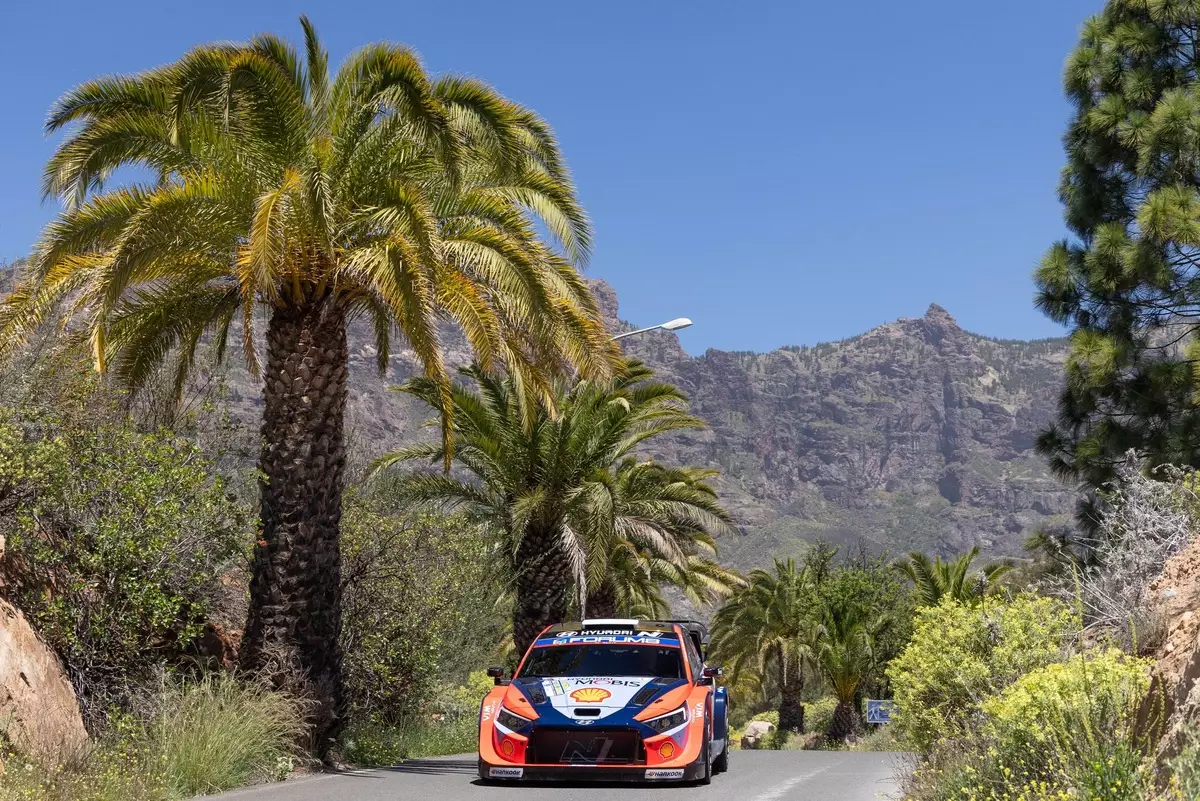The world of motorsport, especially the World Rally Championship (WRC), is fraught with challenges and surprises, making the recent performance of Hyundai at Rally Islas Canarias particularly telling. The team’s admission that they were “clearly unprepared” for this event hits hard, especially considering that the rally was the first pure asphalt event of the 2025 season. It’s not just a minor setback—it’s a wake-up call highlighting the intricacies of competition at such high levels. Despite arriving with a sense of optimism, the reality of their performance quickly disillusioned any expectations they had pre-race.
Madness ensued when Toyota outpaced Hyundai with a staggering 1-2-3-4 finish. Such dominance from a rival raises eyebrows regarding Hyundai’s preparations. Suffice it to say, the team’s struggle to harness the potential of their i20 N Rally1 car during the event revealed significant issues—issues that speak volumes about their readiness and adaptability. Instead of showcasing their strengths, they found themselves in a position where the rally effectively became a makeshift test session, revealing more questions than answers.
Set-Up Struggles and Tactical Decisions
At the heart of Hyundai’s difficulties lay their inability to fine-tune vehicle setups and handling across their fleet. The strategic miscalculation regarding the differential selections before the event turned out to be detrimental. Sealed components that could not be easily adjusted limited their response after the fact, shining a spotlight on the necessity for real-time adaptations in such a competitive environment.
Rally Islas Canarias demanded not just speed but finesse, and as the team’s cars struggled with the Hankook hard compound tires, it became evident that their performance was not just a reflection of the drivers but of the overarching mechanics of their vehicle. The stark contrast between Hyundai’s struggles and Toyota’s success emphasizes the importance of thorough preparation and adaptability in motorsport, elements that Hyundai must refine if they intend to return to their previous competitive stature.
Individual Performance Amidst Team Woes
Amidst these challenges, Adrien Fourmaux’s performance stood out as a beacon of hope for Hyundai. By opting for a different setup, he emerged as the fastest Hyundai, albeit still significantly behind Toyota’s champion, Kalle Rovanperä. His finishing position, while respectable compared to his teammates, underscores the internal rivalry within the team even during difficult times.
Fourmaux’s perspective is refreshing; his recognition that last weekend’s issues were not necessarily reflective of Hyundai’s inherent capabilities ensures that optimism reigns despite the setbacks. His confidence in Hyundai’s ability to address the challenges indicates a resilient team spirit. While it’s easy to dwell on failures, it’s crucial to acknowledge moments of clarity and insight that can pave the way for future improvements.
Lessons Learned and the Road Ahead
The sentiments expressed by Ott Tänak, a key driver, indicate a more profound realization that simply tinkering with setups for the next event won’t suffice. He implied that the path to getting back on Toyota’s pace isn’t straightforward, which opens the door to a wider discussion about the need for strategic overhauls within the team. The mention of “big lessons” speaks to a potential shift in the team’s mentality and operational tactics moving forward.
As both Tänak and Fourmaux indicated, the issues observed during the Rally Islas Canarias are not likely to translate into the upcoming Central European Rally, which offers a distinct series of challenges. The acknowledgment of these challenges emphasizes the need for reflection and growth in performance that could very well put Hyundai back into contention for titles if navigated wisely.
Instead of recoiling in disappointment from their recent experience, Hyundai must harness this setback as a stepping stone toward innovation and resilience, ensuring that they learn from this harsh but invaluable experience. The road to recovery involves not only refining their automotive technology but also bolstering team cohesion and strategy that can hold up against formidable opponents like Toyota as the season progresses.

